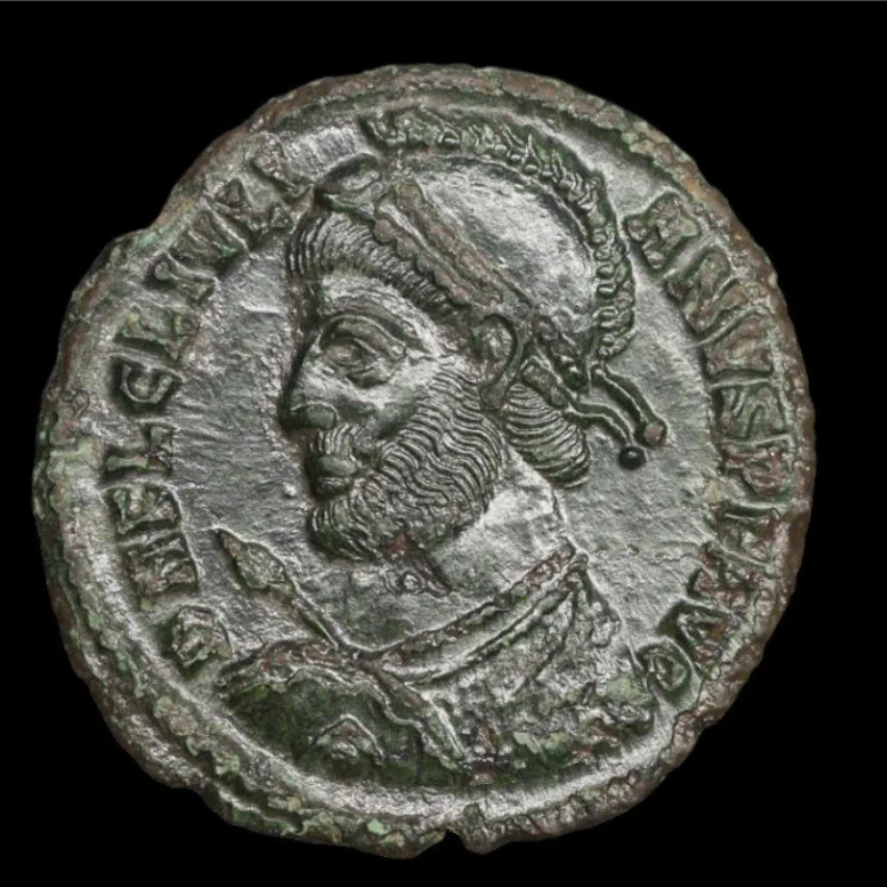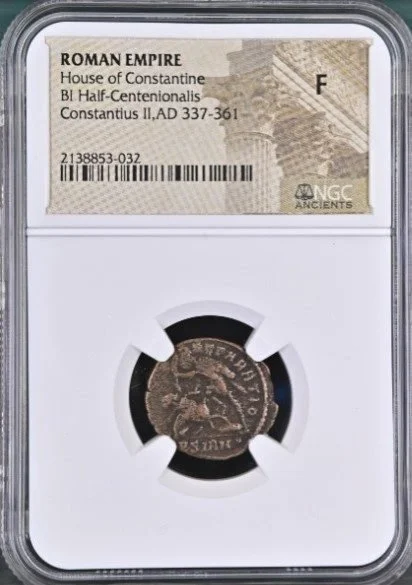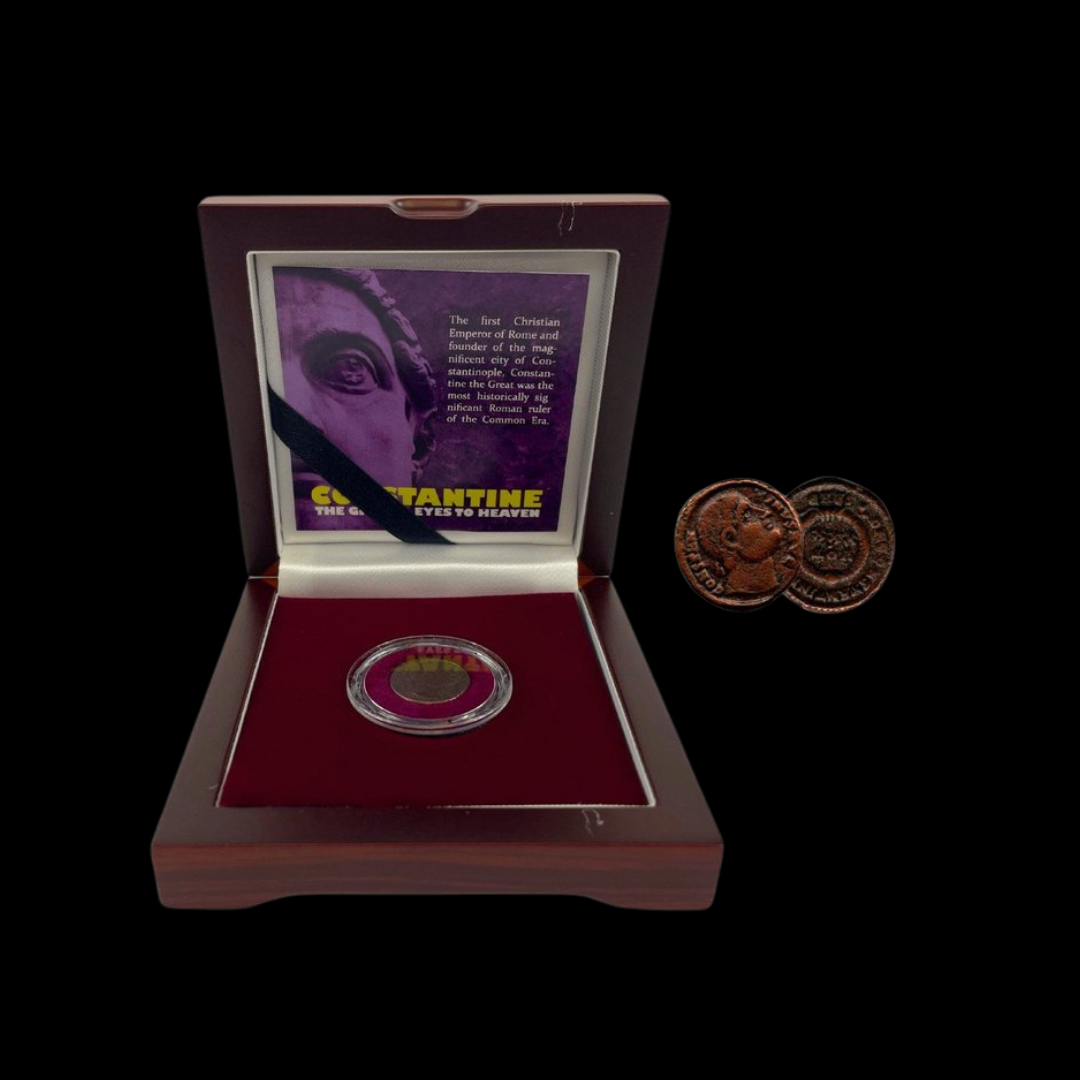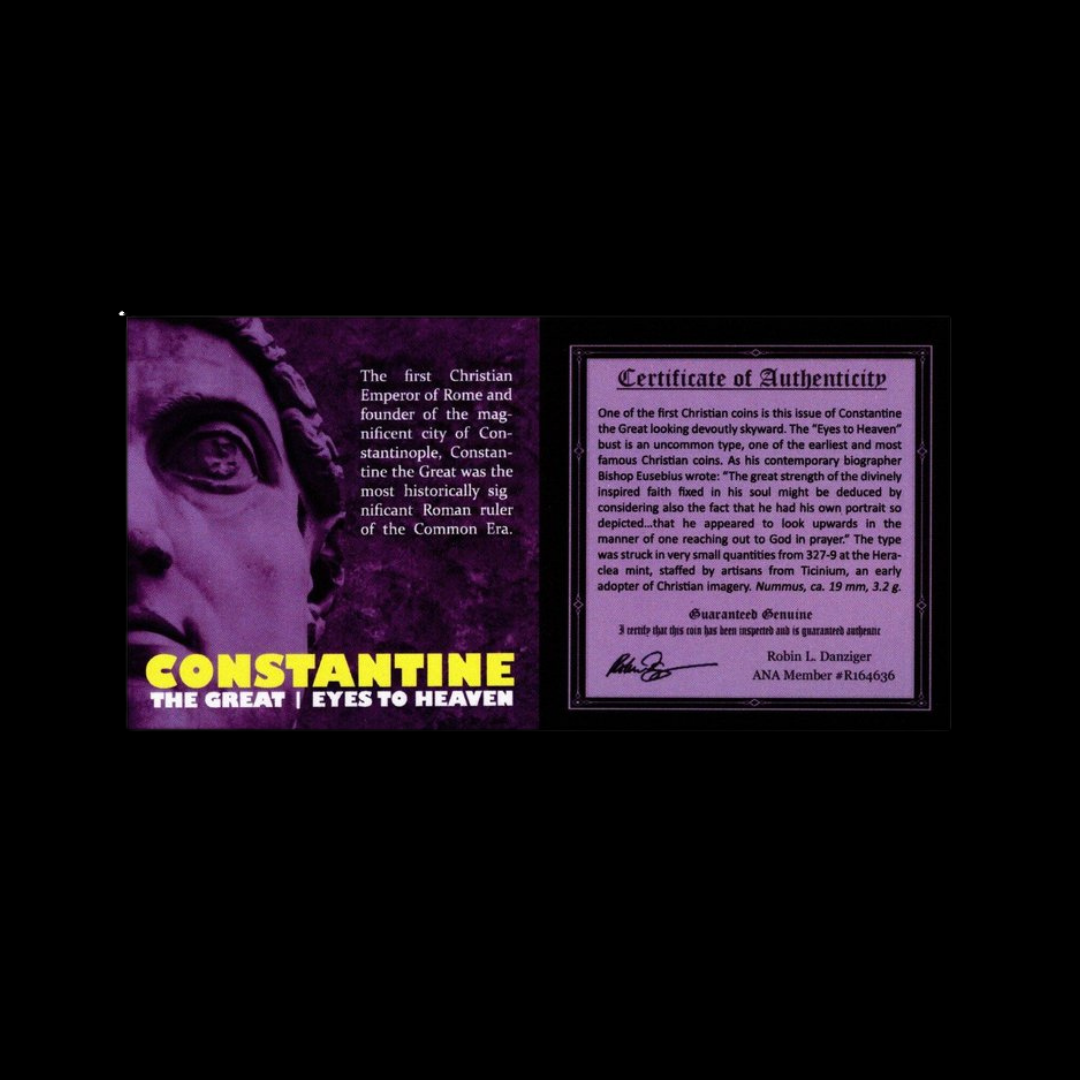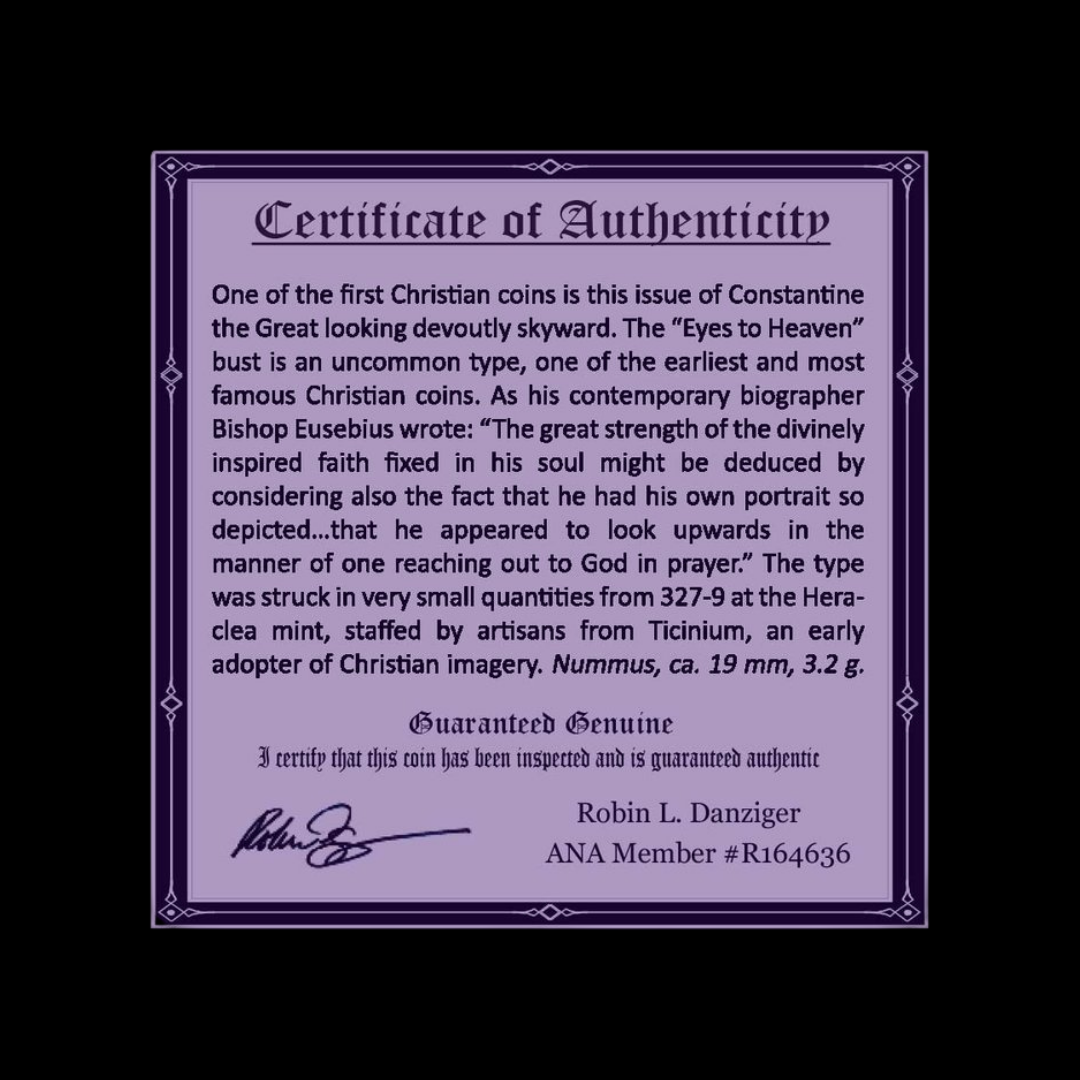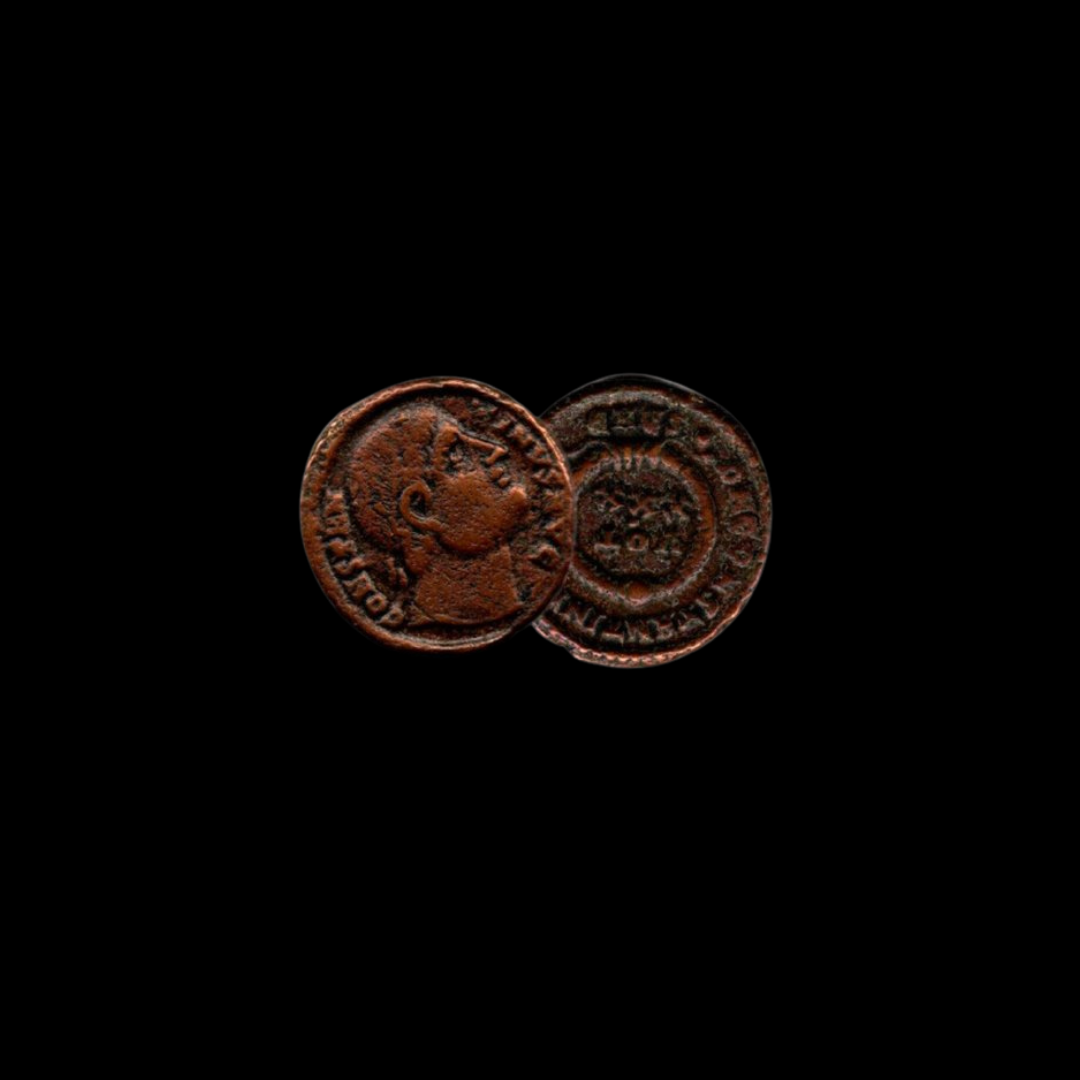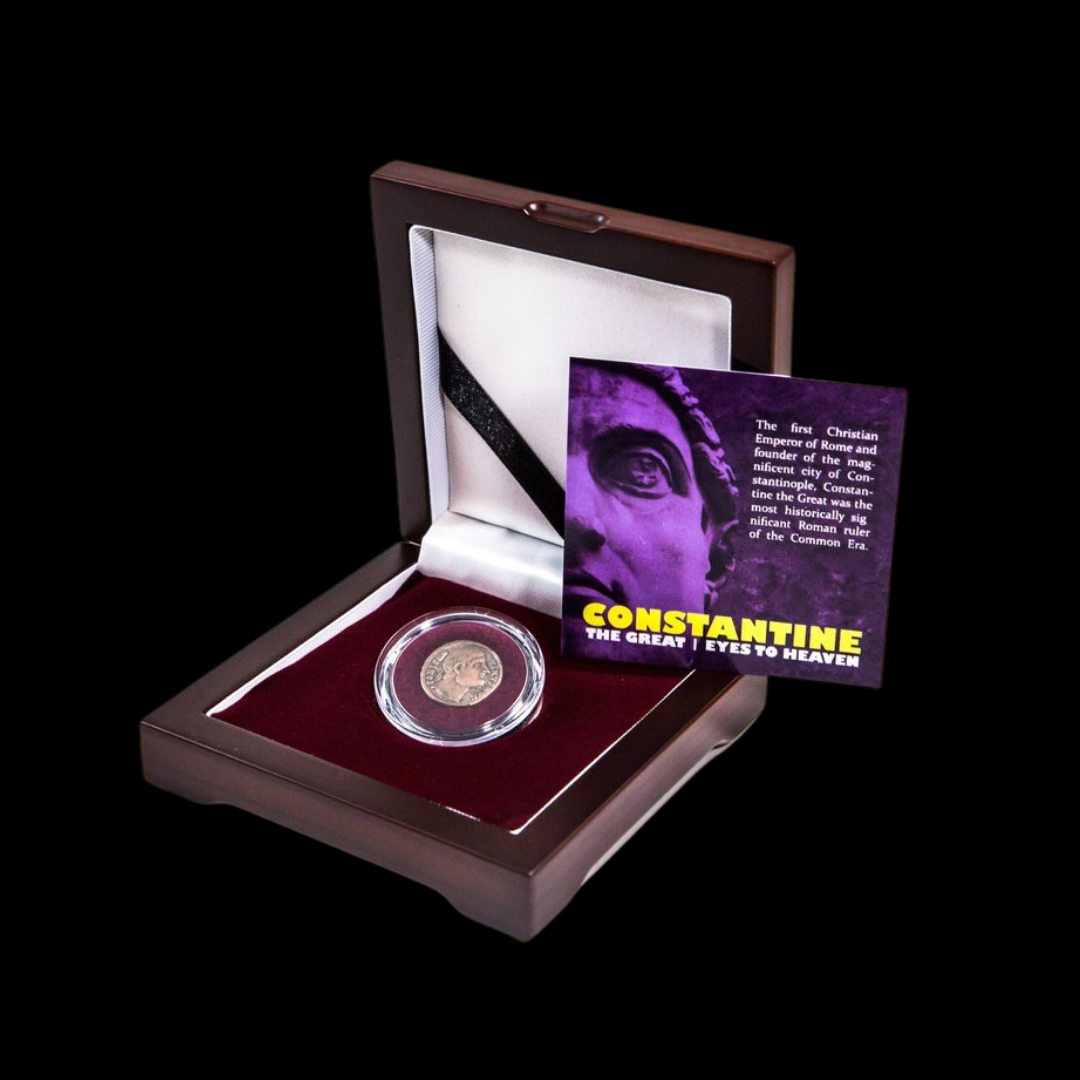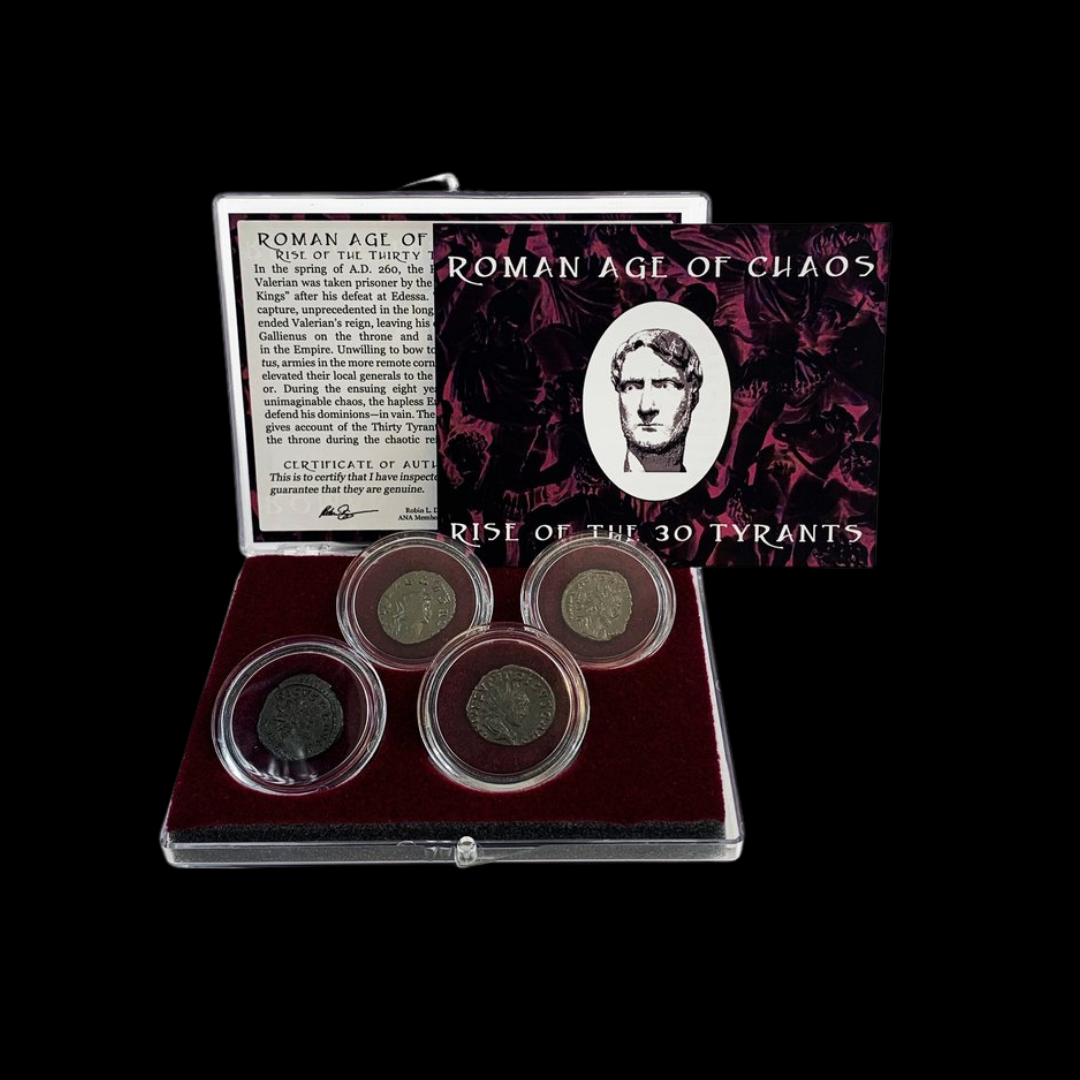 Image 1 of 12
Image 1 of 12

 Image 2 of 12
Image 2 of 12

 Image 3 of 12
Image 3 of 12

 Image 4 of 12
Image 4 of 12

 Image 5 of 12
Image 5 of 12

 Image 6 of 12
Image 6 of 12

 Image 7 of 12
Image 7 of 12

 Image 8 of 12
Image 8 of 12

 Image 9 of 12
Image 9 of 12

 Image 10 of 12
Image 10 of 12

 Image 11 of 12
Image 11 of 12

 Image 12 of 12
Image 12 of 12













The Roman Tetrarchy: A Collection of Four NGC-Slabbed Coins
This extraordinary collection features four authenticated Roman bronze folles from one of the most innovative political systems in Roman history - the Tetrarchy or "rule of four." Established by Emperor Diocletian to manage the vast Roman Empire more effectively, this system divided imperial power among four rulers: two senior emperors (Augusti) and their designated successors (Caesars).
1. Diocletian Bronze Follis (about 1725 years ago)
This NGC-certified bronze coin was issued by Diocletian, the visionary emperor who created the Tetrarchy system to stabilize the Roman Empire after decades of crisis and civil war.
Coin Description:
Front side: Portrait of Emperor Diocletian wearing a laurel wreath or radiate crown, with Latin inscription of his titles, likely "IMP DIOCLETIANVS AVG" (Emperor Diocletian Augustus)
Back side: Mythological or military theme (specific design not specified), possibly featuring Genius (the divine spirit), Jupiter, or personifications of imperial virtues
Technical Details:
Bronze composition
Denomination: Follis (reformed larger bronze coin introduced by Diocletian)
Certification: NGC-slabbed in VF (Very Fine) condition
Date: 284-305 AD
Historical Significance: This coin was minted under Diocletian, the mastermind of the Tetrarchy system and architect of extensive imperial reforms. Rising from humble origins in Dalmatia (modern Croatia), Diocletian stabilized the empire after the tumultuous Crisis of the Third Century. In 293 AD, he formalized the Tetrarchy, appointing Galerius as his Caesar in the East while his co-Augustus Maximian ruled the West with Constantius I as his Caesar. Diocletian also implemented major economic, military, and administrative reforms, including a new tax system and the monetary reform that created the follis coin type represented in this collection.
2. Maximian Bronze Follis (about 1720 years ago)
This NGC-certified bronze coin was issued by Maximian, Diocletian's trusted comrade who served as co-Augustus ruling the western provinces of the Roman Empire.
Coin Description:
Front side: Portrait of Emperor Maximian wearing a laurel wreath or radiate crown, with Latin inscription such as "IMP MAXIMIANVS AVG" (Emperor Maximian Augustus)
Back side: Mythological or military theme (specific design not specified), possibly featuring Hercules (with whom Maximian identified), Victory, or other imperial imagery
Technical Details:
Bronze composition
Denomination: Follis
Certification: NGC-slabbed in VF (Very Fine) condition
Date: 286-310 AD
Historical Significance: This coin was minted under Maximian, Diocletian's loyal colleague who was appointed as co-Augustus to rule the western half of the empire. Taking the epithet "Herculius" to complement Diocletian's "Jovius" (Jupiter-like), Maximian was primarily a military leader who defended the Rhine and Danube frontiers against barbarian incursions. Though he reluctantly abdicated alongside Diocletian in 305 AD, Maximian later returned to politics during the subsequent power struggles, eventually allying with and then betraying Constantine (son of Constantius I) before his forced suicide in 310 AD.
3. Galerius Bronze Follis (about 1715 years ago)
This NGC-certified bronze coin was issued by Galerius, who served as Diocletian's Caesar (junior emperor) in the East before becoming Augustus after Diocletian's retirement.
Coin Description:
Front side: Portrait of Galerius wearing imperial regalia, likely with the inscription "GAL VAL MAXIMIANVS NOB CAES" (as Caesar) or "IMP GAL VAL MAXIMIANVS AVG" (as Augustus)
Back side: Mythological or military theme (specific design not specified), possibly depicting sacrificial scenes, the Genius of the Roman People, or military victories
Technical Details:
Bronze composition
Denomination: Follis
Certification: NGC-slabbed in VF (Very Fine) condition
Date: 293-311 AD
Historical Significance: This coin was minted under Galerius, a military commander of humble birth who rose through the ranks to become Diocletian's Caesar and eventual successor in the East. Known for his military victories against the Persians and his harsh persecution of Christians, Galerius became the senior Augustus after Diocletian's abdication in 305 AD. Shortly before his death from a painful illness in 311 AD, he issued an edict of toleration that ended the persecution of Christians, marking a pivotal turning point in Roman religious policy.
4. Constantius I Chlorus Bronze Follis (about 1715 years ago)
This NGC-certified bronze coin was issued by Constantius I (called "Chlorus" or "the Pale" by later historians), who served as Caesar to Maximian in the West and was the father of Constantine the Great.
Coin Description:
Front side: Portrait of Constantius I wearing imperial regalia, with Latin inscription such as "CONSTANTIVS NOB CAES" (as Caesar) or "IMP CONSTANTIVS AVG" (as Augustus)
Back side: Mythological or military theme (specific design not specified), possibly showing Genius, sacrificial scenes, or commemorations of military victories in Britain or Gaul
Technical Details:
Bronze composition
Denomination: Follis
Certification: NGC-slabbed in VF (Very Fine) condition
Date: 293-306 AD
Historical Significance: This coin was minted under Constantius I Chlorus, who governed Britain and Gaul as Caesar and later Augustus in the Tetrarchy. Known for his military victories in Britain, including the reconquest of rebellious territories, and his more moderate approach toward Christians, Constantius died in York (Eboracum) in 306 AD. His death set in motion the eventual collapse of the Tetrarchy system, as his troops proclaimed his son Constantine as emperor, beginning Constantine's rise to sole rule and the transformation of the Roman world through the legalization of Christianity.
This extraordinary collection features four authenticated Roman bronze folles from one of the most innovative political systems in Roman history - the Tetrarchy or "rule of four." Established by Emperor Diocletian to manage the vast Roman Empire more effectively, this system divided imperial power among four rulers: two senior emperors (Augusti) and their designated successors (Caesars).
1. Diocletian Bronze Follis (about 1725 years ago)
This NGC-certified bronze coin was issued by Diocletian, the visionary emperor who created the Tetrarchy system to stabilize the Roman Empire after decades of crisis and civil war.
Coin Description:
Front side: Portrait of Emperor Diocletian wearing a laurel wreath or radiate crown, with Latin inscription of his titles, likely "IMP DIOCLETIANVS AVG" (Emperor Diocletian Augustus)
Back side: Mythological or military theme (specific design not specified), possibly featuring Genius (the divine spirit), Jupiter, or personifications of imperial virtues
Technical Details:
Bronze composition
Denomination: Follis (reformed larger bronze coin introduced by Diocletian)
Certification: NGC-slabbed in VF (Very Fine) condition
Date: 284-305 AD
Historical Significance: This coin was minted under Diocletian, the mastermind of the Tetrarchy system and architect of extensive imperial reforms. Rising from humble origins in Dalmatia (modern Croatia), Diocletian stabilized the empire after the tumultuous Crisis of the Third Century. In 293 AD, he formalized the Tetrarchy, appointing Galerius as his Caesar in the East while his co-Augustus Maximian ruled the West with Constantius I as his Caesar. Diocletian also implemented major economic, military, and administrative reforms, including a new tax system and the monetary reform that created the follis coin type represented in this collection.
2. Maximian Bronze Follis (about 1720 years ago)
This NGC-certified bronze coin was issued by Maximian, Diocletian's trusted comrade who served as co-Augustus ruling the western provinces of the Roman Empire.
Coin Description:
Front side: Portrait of Emperor Maximian wearing a laurel wreath or radiate crown, with Latin inscription such as "IMP MAXIMIANVS AVG" (Emperor Maximian Augustus)
Back side: Mythological or military theme (specific design not specified), possibly featuring Hercules (with whom Maximian identified), Victory, or other imperial imagery
Technical Details:
Bronze composition
Denomination: Follis
Certification: NGC-slabbed in VF (Very Fine) condition
Date: 286-310 AD
Historical Significance: This coin was minted under Maximian, Diocletian's loyal colleague who was appointed as co-Augustus to rule the western half of the empire. Taking the epithet "Herculius" to complement Diocletian's "Jovius" (Jupiter-like), Maximian was primarily a military leader who defended the Rhine and Danube frontiers against barbarian incursions. Though he reluctantly abdicated alongside Diocletian in 305 AD, Maximian later returned to politics during the subsequent power struggles, eventually allying with and then betraying Constantine (son of Constantius I) before his forced suicide in 310 AD.
3. Galerius Bronze Follis (about 1715 years ago)
This NGC-certified bronze coin was issued by Galerius, who served as Diocletian's Caesar (junior emperor) in the East before becoming Augustus after Diocletian's retirement.
Coin Description:
Front side: Portrait of Galerius wearing imperial regalia, likely with the inscription "GAL VAL MAXIMIANVS NOB CAES" (as Caesar) or "IMP GAL VAL MAXIMIANVS AVG" (as Augustus)
Back side: Mythological or military theme (specific design not specified), possibly depicting sacrificial scenes, the Genius of the Roman People, or military victories
Technical Details:
Bronze composition
Denomination: Follis
Certification: NGC-slabbed in VF (Very Fine) condition
Date: 293-311 AD
Historical Significance: This coin was minted under Galerius, a military commander of humble birth who rose through the ranks to become Diocletian's Caesar and eventual successor in the East. Known for his military victories against the Persians and his harsh persecution of Christians, Galerius became the senior Augustus after Diocletian's abdication in 305 AD. Shortly before his death from a painful illness in 311 AD, he issued an edict of toleration that ended the persecution of Christians, marking a pivotal turning point in Roman religious policy.
4. Constantius I Chlorus Bronze Follis (about 1715 years ago)
This NGC-certified bronze coin was issued by Constantius I (called "Chlorus" or "the Pale" by later historians), who served as Caesar to Maximian in the West and was the father of Constantine the Great.
Coin Description:
Front side: Portrait of Constantius I wearing imperial regalia, with Latin inscription such as "CONSTANTIVS NOB CAES" (as Caesar) or "IMP CONSTANTIVS AVG" (as Augustus)
Back side: Mythological or military theme (specific design not specified), possibly showing Genius, sacrificial scenes, or commemorations of military victories in Britain or Gaul
Technical Details:
Bronze composition
Denomination: Follis
Certification: NGC-slabbed in VF (Very Fine) condition
Date: 293-306 AD
Historical Significance: This coin was minted under Constantius I Chlorus, who governed Britain and Gaul as Caesar and later Augustus in the Tetrarchy. Known for his military victories in Britain, including the reconquest of rebellious territories, and his more moderate approach toward Christians, Constantius died in York (Eboracum) in 306 AD. His death set in motion the eventual collapse of the Tetrarchy system, as his troops proclaimed his son Constantine as emperor, beginning Constantine's rise to sole rule and the transformation of the Roman world through the legalization of Christianity.


